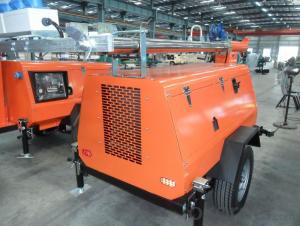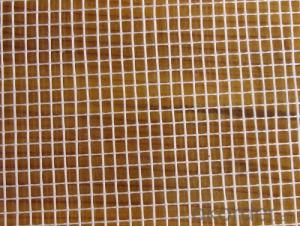2.5 Kw Solar Inverter
2.5 Kw Solar Inverter Related Searches
Best Inverter Solar Panel Solar Panel On Roof Rack Inverter To Solar Panel Ratio Solar Panel Decking Lights Solar Panel Inverter Box 1000 Watt Solar Panel Inverter 12 Volt Solar Panel Inverter Plastic Solar Lanterns Buy Solar Panel Inverter Solar Panel Inverter CostHot Searches
Type Of Inverter For Solar Types Of Inverter For Solar Used Solar Inverter For Sale Inverter Size For Solar System Solar Edge Inverter For Sale 5kw Solar Inverter For Sale Solar Inverter For Sale Solar Inverter For Battery Solar Inverter For Split Ac Solar Inverter For Laptop Solar Inverter For Fridge Solar With Inverter Price Solar Inverter With 2 Battery Solar Inverter Price In China Best Solar Inverter In China Solar Inverter Price In Dubai Solar Inverter Price In Uae Solar Inverter Price In Kenya Solar Inverter Price In Kerala Solar Hot Water Collectors For Sale2.5 Kw Solar Inverter Supplier & Manufacturer from China
Okorder.com is a professional 2.5 Kw Solar Inverter supplier & manufacturer, offers integrated one-stop services including real-time quoting and online cargo tracking. We are funded by CNBM Group, a Fortune 500 enterprise and the largest 2.5 Kw Solar Inverter firm in China.Hot Products
FAQ
- A grid-tied solar inverter works by converting the direct current (DC) electricity generated by the solar panels into alternating current (AC) electricity that can be used to power household appliances and be fed back into the electrical grid. It synchronizes the frequency and voltage of the solar-generated AC electricity with that of the grid, allowing seamless integration and transfer of power. This inverter also ensures safety by monitoring the grid connection and automatically disconnecting the solar system from the grid during power outages or maintenance work. Overall, it enables efficient utilization of solar energy and allows homeowners to reduce their reliance on fossil fuels while potentially earning credits for excess electricity generated.
- There are several reasons why surge protection is extremely important in a solar inverter. Firstly, solar inverters have the responsibility of converting the direct current (DC) generated by solar panels into alternating current (AC) that can be used to power electrical devices. This conversion process can potentially cause power surges or voltage spikes. If these surges occur, they can harm the sensitive electronic components inside the inverter, resulting in malfunctions or even complete failure. Secondly, solar inverters are often connected to the electrical grid, which allows excess electricity produced by the solar panels to be sent back into the grid. However, the grid is susceptible to power fluctuations and surges caused by lightning strikes, utility switching, or other external factors. Without sufficient surge protection, these power surges can travel back through the grid and cause damage to the solar inverter. Furthermore, surge protection is crucial for safeguarding the entire solar power system. Apart from the solar inverter, there are other interconnected components like charge controllers, battery systems, and monitoring equipment. Any surge occurring in any part of the system has the potential to damage or disrupt the operation of the entire system. By incorporating surge protection devices like surge suppressors or surge arresters into the solar inverter, excess energy from power surges is diverted away from the sensitive electronic components. These devices are specifically designed to absorb or redirect the surge, thereby shielding the inverter and other connected equipment. In conclusion, surge protection is of utmost importance in a solar inverter as it prevents damage from power surges during the conversion process, provides protection against external power fluctuations from the grid, and safeguards the entire solar power system. Investing in proper surge protection ensures the long-lasting and reliable functioning of the solar inverter, minimizing the risk of expensive repairs or replacements.
- Yes, a solar inverter can be used in mobile applications. Portable solar inverters are designed specifically for mobile use and are commonly used in recreational vehicles, boats, camping, and other off-grid applications. These inverters convert the direct current (DC) generated by solar panels into alternating current (AC) to power mobile devices and appliances.
- A solar inverter handles voltage fluctuations in the grid by continuously monitoring the grid voltage. When the voltage exceeds or drops below the acceptable range, the inverter adjusts the power output of the solar panels accordingly. It stabilizes the voltage by regulating the flow of electricity from the solar panels, ensuring a consistent and safe supply of power to the grid.
- The typical size and weight of a solar inverter can vary depending on its power capacity. Generally, residential solar inverters range in size from around 30 x 50 x 20 cm (12 x 20 x 8 inches) to 60 x 60 x 30 cm (24 x 24 x 12 inches) and weigh between 10 kg (22 lbs) to 25 kg (55 lbs). Commercial or utility-scale inverters, on the other hand, can be much larger and heavier, weighing several hundred kilograms (or even tons) and occupying larger spaces.
- Yes, a solar inverter can be used with solar concentrators. Solar concentrators are designed to focus sunlight onto a smaller area, increasing its intensity. The concentrated sunlight is then converted into electricity by the solar panels and fed into the solar inverter, which converts the DC power generated by the panels into AC power suitable for use in homes or businesses. Therefore, solar concentrators and solar inverters can work together to maximize the efficiency and output of a solar energy system.
- Yes, a solar inverter can be used for commercial-scale solar installations. In fact, commercial-scale solar installations often require multiple solar inverters to convert the DC power generated by the solar panels into usable AC power for commercial use. These inverters are designed to handle the higher power output and voltage levels typically found in larger solar installations.
- The role of a power monitoring feature in a solar inverter is to constantly monitor and measure the amount of power being generated by the solar panels. This feature allows users to track the performance of their solar system, detect any issues or malfunctions, and optimize the energy output for maximum efficiency. It provides real-time data on the power production, enabling users to make informed decisions regarding energy usage and grid integration.














































